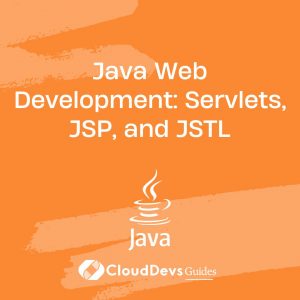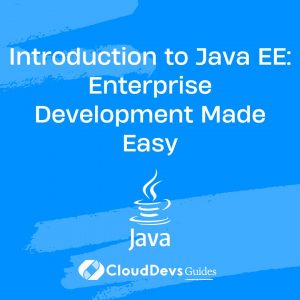Introduction to Hibernate: Object-Relational Mapping in Java
In the realm of software development, working with databases is an inevitable part of creating robust applications. Traditionally, bridging the gap between object-oriented programming and relational databases has been a complex and error-prone task. This is where Hibernate comes to the rescue. Hibernate is a Java-based framework that provides an elegant solution to the challenge of Object-Relational Mapping (ORM), making it easier for developers to interact with databases using Java objects. In this blog, we will delve into the world of Hibernate, exploring its core concepts, benefits, and how it simplifies the way Java applications communicate with relational databases.
Table of Contents
1. Understanding Object-Relational Mapping (ORM)
Before we dive into Hibernate, let’s understand what Object-Relational Mapping (ORM) is all about. In software development, objects are used to model real-world entities, and databases are used to store and manage data. However, objects and relational databases have different structures, making it challenging to map one to the other seamlessly. This is where ORM comes in.
ORM is a programming technique that allows developers to work with objects in their programming language while automatically generating the necessary SQL queries to interact with a relational database. This helps eliminate the need for manually writing SQL queries and mapping code, saving time and reducing errors.
2. Enter Hibernate: The ORM Solution
Hibernate, developed by Gavin King in 2001, is one of the most popular and widely used ORM frameworks in the Java ecosystem. It provides a layer of abstraction that handles the mapping between Java objects and database tables, allowing developers to focus on their application’s logic rather than the intricacies of database communication. Here are some key reasons why Hibernate stands out:
2.1. Simplicity and Productivity
Hibernate significantly simplifies database interaction by abstracting away the complexities of SQL queries and result set handling. Developers can work with familiar Java objects and use a rich set of APIs provided by Hibernate to perform CRUD (Create, Read, Update, Delete) operations on the database. This results in increased productivity and shorter development cycles.
2.2. Portability
One of the challenges in traditional database interaction is maintaining portability across different database systems. Hibernate addresses this by providing a consistent API that shields developers from database-specific SQL syntax and nuances. This means you can switch between different databases with minimal code changes.
2.3. Performance Optimization
Hibernate offers features like caching and lazy loading, which can greatly enhance application performance. Caching reduces the number of database queries by storing frequently accessed data in memory, while lazy loading loads associated data only when needed, reducing the initial load time of objects.
3. Core Concepts of Hibernate
To gain a better understanding of how Hibernate works, let’s explore some of its core concepts:
3.1. Entity Classes
In Hibernate, entity classes are Java classes that are mapped to database tables. These classes represent the objects you want to store in the database. Each entity class typically corresponds to a row in the database table, and the attributes of the class correspond to the table columns.
java
@Entity
@Table(name = "students")
public class Student {
@Id
@GeneratedValue(strategy = GenerationType.IDENTITY)
@Column(name = "id")
private int id;
@Column(name = "first_name")
private String firstName;
@Column(name = "last_name")
private String lastName;
// Constructors, getters, setters
}
In this example, the Student class is mapped to the “students” table in the database. The @Entity annotation indicates that this is an entity class, and the @Table annotation specifies the table name.
3.2. Session Factory
The Session Factory is a key component in Hibernate. It is responsible for creating and managing sessions, which are used to interact with the database. The Session Factory is typically built once during the application’s startup and is thread-safe, allowing multiple sessions to be created from it.
java SessionFactory sessionFactory = new Configuration().configure().buildSessionFactory();
3.3. Sessions
A Session in Hibernate represents a single unit of work with the database. It provides methods to perform database operations and manage the lifecycle of persistent objects. Sessions are opened from the Session Factory and should be closed once the work is done.
java
Session session = sessionFactory.openSession();
Transaction transaction = session.beginTransaction();
Student student = new Student("John", "Doe");
session.save(student);
transaction.commit();
session.close();
In this code snippet, a new Student object is saved to the database using the session.save() method within a transaction. Once the transaction is committed, the session is closed.
3.4. HQL (Hibernate Query Language)
HQL is a powerful query language provided by Hibernate that is similar to SQL but operates on entity objects instead of database tables. It allows you to perform complex queries and retrieve data using object-oriented syntax.
java
String hql = "FROM Student WHERE lastName = :lastName";
Query query = session.createQuery(hql);
query.setParameter("lastName", "Doe");
List<Student> students = query.list();
Here, the HQL query retrieves all Student objects with the last name “Doe”.
4. Benefits of Using Hibernate
Using Hibernate for ORM offers several benefits that contribute to more efficient and maintainable codebases:
4.1. Increased Productivity
By abstracting away the complexities of SQL and database interaction, developers can focus more on application logic and business requirements, leading to higher productivity and faster development cycles.
4.2. Reduced Boilerplate Code
Hibernate eliminates the need to write repetitive SQL statements and mapping code, reducing boilerplate code and allowing developers to write more concise and readable code.
4.3. Database Portability
With Hibernate’s consistent API, switching between different database systems becomes less cumbersome. This allows applications to be more adaptable to changing database requirements.
4.4. Automatic Schema Generation
Hibernate can automatically generate database schemas based on the entity classes, saving developers the hassle of manually creating and modifying database tables.
4.5. Caching and Performance Optimization
Hibernate’s caching mechanisms can significantly improve application performance by reducing database queries and optimizing data retrieval.
Conclusion
Hibernate has revolutionized the way Java applications interact with relational databases by providing an elegant and efficient solution to Object-Relational Mapping. Its simplicity, portability, and performance optimization features make it a favorite among developers worldwide. By abstracting away the complexities of database interaction, Hibernate empowers developers to focus on building feature-rich applications without getting entangled in intricate SQL queries and database details. As you embark on your journey with Hibernate, you’ll find yourself better equipped to create applications that are not only robust and scalable but also easier to maintain and extend.
Table of Contents









